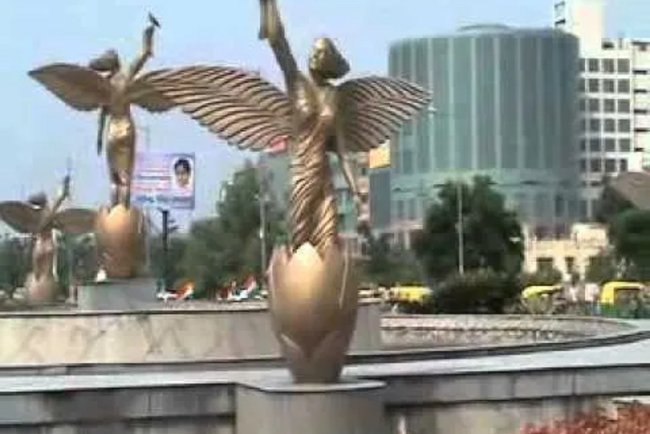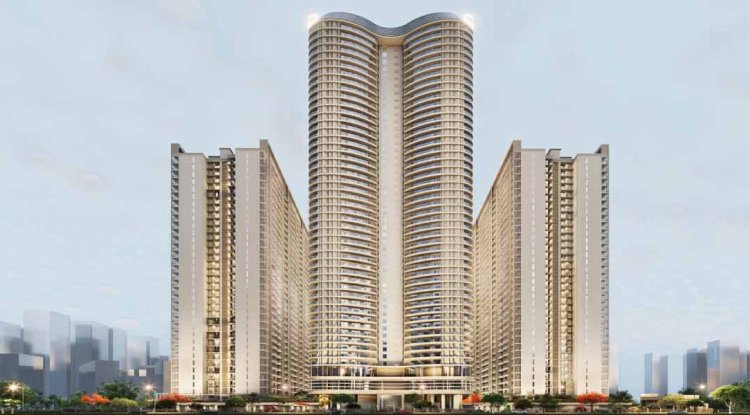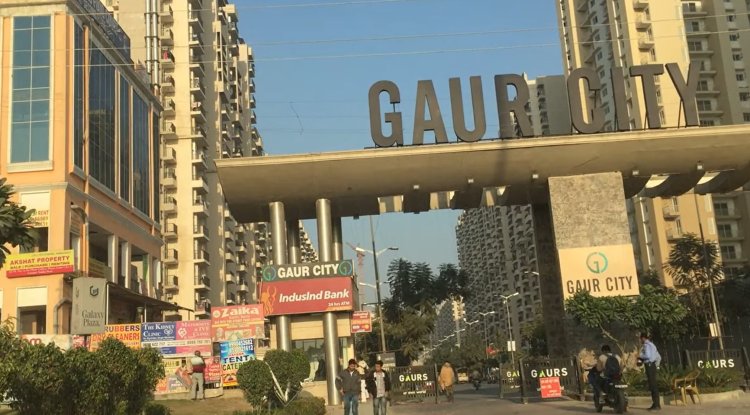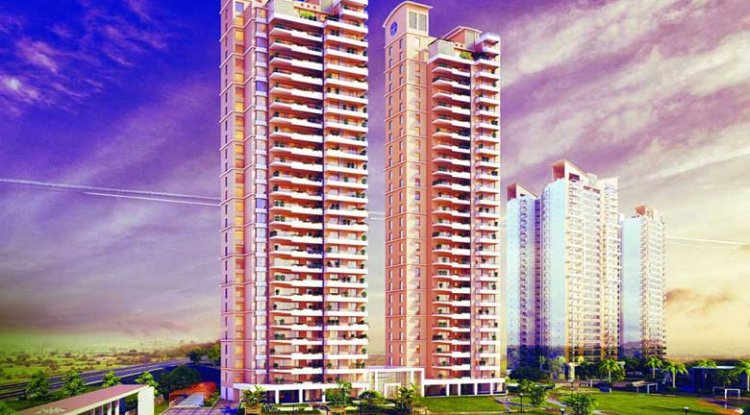New Delhi Railway Station (NDLS) Schedule Train
New Delhi Railway Station (NDLS) is one of India's busiest and most vital railway hubs, located in the heart of the capital. Serving over 500 trains daily, NDLS is a crucial point for both long-distance and suburban routes. The station's train schedule is meticulously planned, with trains running to all major cities across India. Platforms are allocated based on train types, with real-time updates provided via digital displays and mobile apps. The station's extensive infrastructure includes 16 platforms, advanced monitoring systems, and numerous passenger amenities, ensuring a smooth and efficient travel experience for millions of passengers each day.
New Delhi Railway Station (NDLS) is the epicenter of Indian Railways, serving as one of the busiest and most significant railway stations in the country. Strategically located in the heart of India’s capital, New Delhi, NDLS is a critical node in the vast railway network that connects various parts of India. The station's train scheduling is a complex operation, ensuring the smooth transit of millions of passengers daily. This article delves into the intricacies of train scheduling at NDLS, examining its historical background, current infrastructure, scheduling mechanisms, and future developments.
Historical Background of New Delhi Railway Station (NDLS)
NDLS, established in 1926, has a rich history that parallels India's growth and development. Originally constructed to serve as a primary point of entry into the capital, the station has undergone several transformations to accommodate the increasing demand for rail travel. The station's architecture, with its distinctive red-brick façade, reflects a blend of British colonial and modern Indian design. Over the decades, NDLS has expanded both in terms of infrastructure and the number of trains it handles, growing from a modest station to one of the largest in India.

Infrastructure at NDLS
NDLS is spread across approximately 86 acres and is divided into two primary sections: the Ajmeri Gate side and the Paharganj side. The station boasts 16 platforms, each catering to various types of trains, including long-distance express trains, superfast trains, and suburban trains.
-
Ajmeri Gate Side: This newer section of the station is equipped with modern amenities, including escalators, elevators, digital information boards, and ample waiting areas. It primarily caters to long-distance trains that connect New Delhi to major cities across India.
-
Paharganj Side: The older section, closer to the Paharganj neighborhood, is more traditional in its layout and facilities. It is directly connected to the Delhi Metro, providing seamless connectivity for passengers using both rail and metro services. This side also caters to suburban trains, offering services to nearby regions.
Key facilities at NDLS include:
- Waiting Rooms: Designated areas for different classes of passengers, providing a comfortable space to wait for trains.
- Food Courts: A variety of dining options, including both local and international food chains, are available to cater to passengers’ needs.
- Wi-Fi Services: Free Wi-Fi is available throughout the station, ensuring that passengers can stay connected while they wait.
- Security Measures: NDLS is equipped with extensive security measures, including CCTV surveillance and regular patrols by the Railway Protection Force (RPF).
Train Scheduling Process at NDLS
The train scheduling process at NDLS is a highly coordinated effort involving multiple stages of planning and execution. The station handles over 500 trains daily, making it one of the most complex operations in the Indian Railways network. The scheduling process can be broken down into the following steps:

-
Timetable Planning: The first step in train scheduling involves the creation of a timetable that accounts for the length of each route, the demand for services, and the availability of infrastructure. This timetable is carefully crafted to ensure that trains arrive and depart on time, with minimal delays.
-
Platform Allocation: With 16 platforms at its disposal, NDLS must allocate platforms based on several factors, including the type of train, its length of stay at the station, and its departure and arrival times. Platform allocation is critical to avoid congestion and ensure a smooth flow of trains through the station.
-
Coordination Across Railway Zones: NDLS operates under the Northern Railway zone but must coordinate with other zones to ensure that trains running through different regions do so without conflicts. This coordination is essential to maintain the integrity of the national railway timetable.
-
Real-Time Monitoring and Adjustments: NDLS employs advanced software and monitoring systems to track the real-time status of trains. These systems allow for dynamic adjustments to the schedule in case of delays, technical issues, or other disruptions. Real-time monitoring is crucial for maintaining punctuality and minimizing the impact of delays on passengers.
-
Emergency Management Protocols: In the event of emergencies, such as accidents or natural disasters, NDLS has protocols in place to manage the situation effectively. These protocols may involve rerouting trains, providing alternate transportation options, or adjusting the timetable to accommodate unforeseen delays.
Challenges in Train Scheduling
Train scheduling at NDLS comes with its own set of challenges, primarily due to the sheer volume of trains and passengers that pass through the station daily.

-
High Passenger Volume: NDLS handles over 500,000 passengers daily, making it one of the busiest stations in the world. This high volume of passengers can lead to congestion, particularly during peak travel times such as holidays and festivals.
-
Congestion and Delays: The station's central location in a densely populated city often leads to traffic congestion in the surrounding areas, which can affect passengers' ability to arrive at the station on time. Additionally, any delays in train arrivals or departures can have a cascading effect, leading to further congestion on the platforms.
-
Adverse Weather Conditions: Weather-related challenges, such as dense fog during the winter months, can significantly disrupt train schedules. Visibility issues and slippery tracks can cause delays, necessitating adjustments to the timetable and additional communication with passengers.
-
Maintenance and Upkeep: The continuous operation of trains requires regular maintenance of tracks, platforms, and other infrastructure. Scheduling maintenance activities without disrupting the regular timetable is a constant challenge.
Impact on Passengers
The efficiency of train scheduling at NDLS has a direct impact on the passenger experience. Effective scheduling ensures that trains run on time, minimizing the chances of missed connections and providing a more comfortable travel experience. Conversely, delays and poor scheduling can lead to overcrowded platforms, missed trains, and a stressful travel experience.
-
Punctuality: Passengers rely on the punctuality of trains to plan their journeys, especially when making connections with other modes of transport. Any delays can have a ripple effect, causing inconvenience and additional costs for passengers.
-
Real-Time Information: Access to real-time information about train schedules is crucial for passengers. NDLS provides this information through digital displays, mobile apps, and announcements, helping passengers stay informed about any changes to their scheduled trains.
-
Passenger Amenities: The availability of amenities such as waiting rooms, food courts, and Wi-Fi services enhances the overall travel experience, making the wait for trains more comfortable and convenient.
Technological Advancements in Train Scheduling
To cope with the challenges of train scheduling, NDLS has embraced various technological advancements that streamline operations and improve the passenger experience.

-
Centralized Traffic Control (CTC): NDLS uses CTC systems to monitor and control train movements across the station. This technology allows for real-time adjustments to the schedule, reducing delays and improving the overall efficiency of train operations.
-
Real-Time GPS Tracking: GPS-based tracking systems provide accurate and up-to-date information on the location of trains, allowing passengers and station authorities to monitor the progress of trains in real-time.
-
Automated Information Systems: NDLS has implemented automated information systems that provide passengers with real-time updates on train schedules, platform changes, and other important announcements. These systems are accessible through digital displays, mobile apps, and public address systems.
-
E-Ticketing and Automated Ticketing Machines: The introduction of e-ticketing and automated ticketing machines has simplified the booking process for passengers, reducing the need for long queues at ticket counters and improving the overall efficiency of ticketing operations.
Future Developments at NDLS
Indian Railways has ambitious plans for the future development of NDLS, aimed at enhancing the station's infrastructure, services, and connectivity.

-
Station Redevelopment: NDLS is undergoing a significant redevelopment project that includes the construction of new platforms, the renovation of existing facilities, and the introduction of modern amenities. The redevelopment is aimed at improving the overall passenger experience and increasing the station's capacity to handle more trains and passengers.
-
Sustainability Initiatives: As part of its commitment to sustainability, NDLS is implementing green initiatives such as solar panel installations, rainwater harvesting, and the use of energy-efficient lighting. These initiatives are designed to reduce the station's environmental footprint and promote sustainable practices.
-
Enhanced Connectivity: NDLS is set to improve its connectivity with other modes of transportation, including the Delhi Metro, bus services, and the upcoming Regional Rapid Transit System (RRTS). These enhancements will make it easier for passengers to transfer between different modes of transport, reducing travel times and improving overall convenience.
-
Digitalization and Automation: The future of NDLS lies in further digitalization and automation of its operations. This includes the expansion of e-ticketing services, the introduction of contactless payment options, and the implementation of more advanced monitoring and control systems.
Also Read :
Conclusion
New Delhi Railway Station (NDLS) is a vital transportation hub that plays a crucial role in the Indian Railways network. The station's ability to efficiently schedule and manage over 500 trains daily is a testament to the complexity and effectiveness of its operations. As NDLS continues to evolve with the adoption of new technologies and infrastructure developments, it is poised to enhance its role as a world-class railway station, offering passengers a smooth and comfortable travel experience. The ongoing and future initiatives at NDLS will not only improve train scheduling but also contribute to a more sustainable and passenger-friendly environment.















